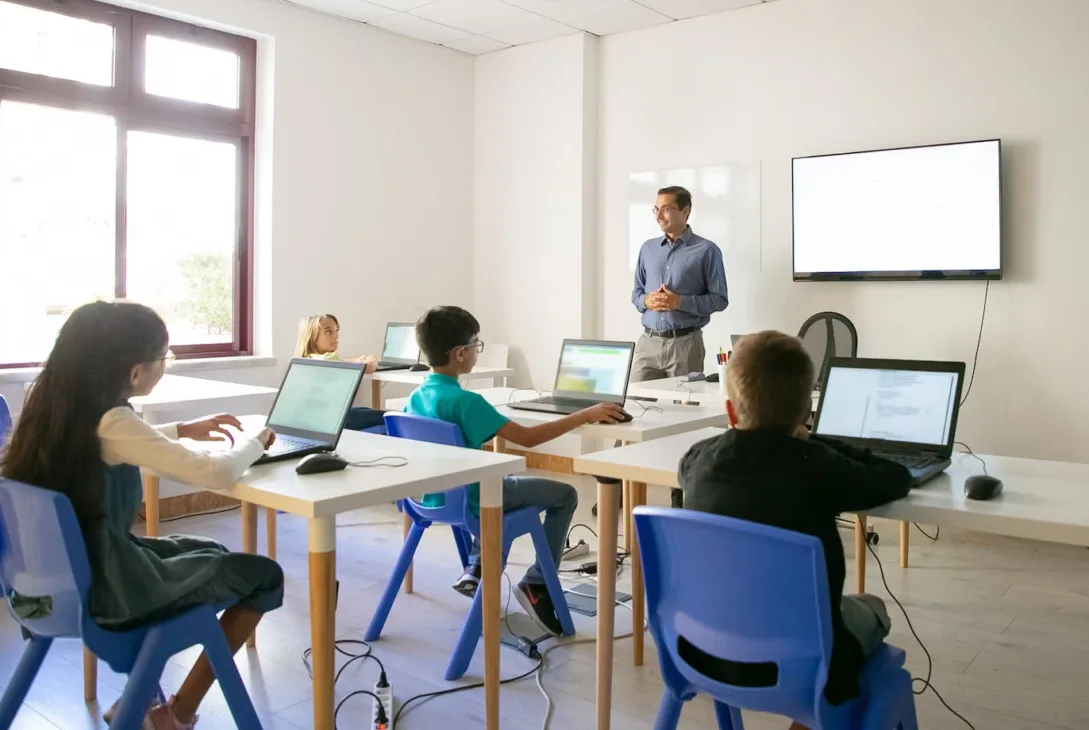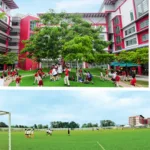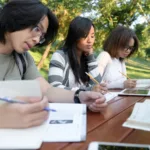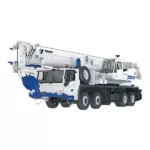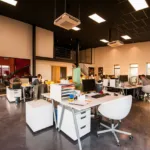Primary education is the basis for a child’s future. It lays out their academic journey and contributes to their personal growth. This part of a child’s life is extremely important because it is the time when young minds are eager to learn, curious, and full of potential. Think of this stage as their stepping stone into their educational journey. In this day and age, learning goes beyond reading, writing, and arithmetic; it’s about building confidence, fostering creativity, nurturing their talents, and communicating with peers. Simply put, primary education is where their adventure begins and every lesson learned becomes a part of their identity for a brighter and fulfilling future.
A vibrant school environment is highly encouraged for children to thrive. As such, an international school is the perfect place for children, regardless of their nationality or background, to come together and embark on a journey of discovery and learning.
You see, international primary schools in Malaysia encapsulate this diverse and inclusive setting. Students get to be exposed to an assorted blend of languages, cultures, and perspectives, helping them gain global experiences right in the heart of Malaysia. Primary schools, specifically, play a role in shaping the next generation. It equips them with the knowledge, skills, and open-mindedness needed to navigate through the next phase of their lives. By embracing diversity and cultivating cross-cultural understanding among children, international primary schools have so much to offer.
Primary Education System in Malaysia
To newbie parents who want to understand how primary education works in Malaysia, we’ve got you. Primary education is the starting point for children aged 7 to 12. They are taught basics and other activities to prepare them for bigger challenges later on.
In Malaysia, primary education lasts for 6 years. In the first 3 years, children are taught reading, writing, and basic math. The next 3 years, they dive deeper into different subjects to prepare them for their secondary studies. Well, now you’re wondering , what do they learn exactly? To be precise, they study subjects like Malay and English language, science, math, Islamic studies, and moral education. They also get to engage in different subjects like geography, history, music, art, and PE to keep things entertaining.
Also, there are many different kinds of primary schools in Malaysia. There are government schools, Chinese and Tamil schools, Islamic religious schools. However, most parents would opt for their children to attend government schools because they are the most common.
Challenges Faced when Choosing a Primary School
Accessibility and Location
For many parents, one of their main concerns is accessibility and location of the school. This is because they have to think about how close it is to their home or work. Since they are also responsible to send their children to school, they have to think about transport arrangements – whether it’s by car, bus, or walking depending on the distance. Moreover, they also need to consider things like how busy the roads are and how long it will take to get there. They need to strike a balance between finding a school that is convenient to get to and one that offers top-tier education for their children.
Quality of Education
When parents look for primary schools for their kids, they need to ensure the qualification of education that particular school is able to provide. They will also ask for information and insights about other students’ academic progress, how teachers teach, what other extracurricular activities there are for students to participate in after school, and if the school has proper facilities.
School Reputation and Ranking
On top of that, parents need to ensure the school has a good reputation. Ranking aside, a school’s reputation is important when it comes to how outsiders will view them. Sometimes, parents are pressured to choose a school that everyone thinks is really good, even if it is more expensive and hard to get into. However, it is not always easy to know which school is the best fit because in the end, different people have different opinions. It can be difficult to not be influenced and make a decision based on rumors.
Cost and Affordability
Another important factor that plays a role when it comes to searching for the best primary school for their child is money. Private or international schools can cost quite a fortune, especially those with a high ranking. Parents have to think about whether they can afford the fees and manage their finances while doing so. On the other hand, they also have to think if it is worth it for their child’s education. Most importantly, as this is a big decision that may affect their family’s finances in the long run, they need to come up with a solid plan.
Fit for Children’s Needs and Preferences
Your decision may be important, but have you ever wondered what your child may think about that particular school you are about to enroll them into. Every child is different so they may require different types of teaching methods. Parents also need to make a decision based on how they like to learn, their interests and preferences. Some of things they need to factor into is how many kids are in the class, whether their teaching style is more old-school or modern. Anything extra are things like special programs that encourage the learning of a new language or focusing on art.
In this era of globalization, we have observed that more and more parents are choosing to opt for international primary schools for their kids. These schools are becoming more popular because they are known for providing top-notch education. We believe that schools should not just teach about occurrences that happen in Malaysia but also all over the world. This way, kids get to learn in a diverse setting, meet people from different backgrounds, and have chances to experience things internationally.
What Makes a Good Primary International School?
Infrastructure
The infrastructure of a primary school is really important for kids to learn. For example, classrooms, libraries, labs, and playgrounds are the facilities that make a difference. When a school has well-kept facilities, they are able to draw out their full potential. For instance, classrooms with good light, fresh air, and lots of space are able to help children concentrate and do their best in school. Having an interactive playground allows them to play ang hang out with their other friends promotes overall growth and happiness, which are equally as important. On top of that, computers and internet access at school help kids become more tech-savvy in the future. However, this may only be feasible with only the best primary school in Malaysia, where they spare no expenses when it comes to providing the best form of education.
Faculty Quality
Teachers at a primary school also play a huge role when it comes to contributing to how well kids learn, adapt, and grow. When teachers are good at their jobs, it can help make an impact in their students’ lives. Experienced and knowledgeable teachers who have had a track record of cultivating and enriching their students’ lives are preferred in this case scenario. This could be due to multiple factors such as being great at teaching different subjects, making lessons interesting, and creating a classroom environment where everyone feels included. Exemplary teachers should also care about their students’ well being.
Extracurricular Activities
Activities after school are also great at helping kids learn and grow in different ways. Some of the activities they can engage in are like sports, arts, clubs, and helping out in the community. It helps them with creativity, time management, and making friends. It could also be a chance for the kids to try new things, and find out what they are good at. With so many different activities present in an international primary school curriculum, they are sure to find something they love and feel included within the school community.


